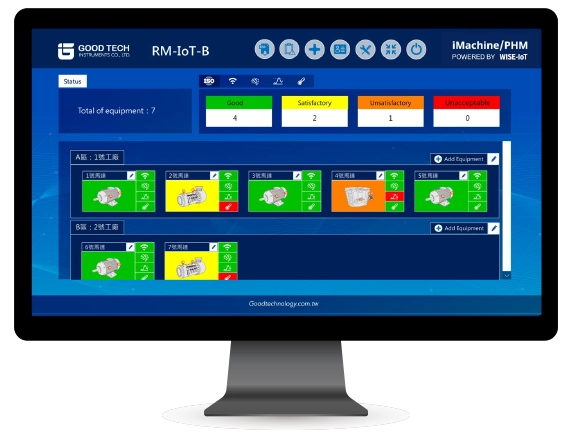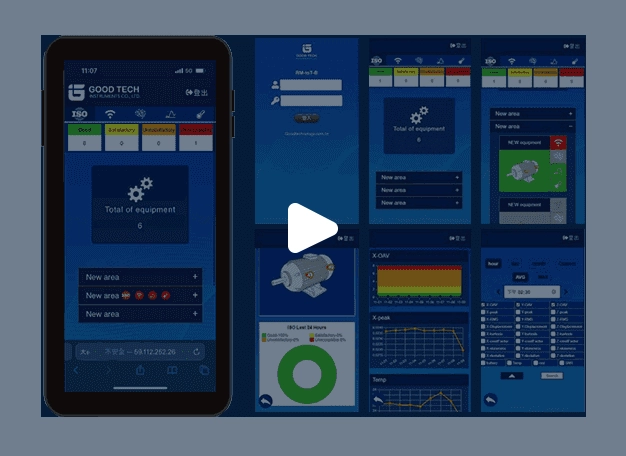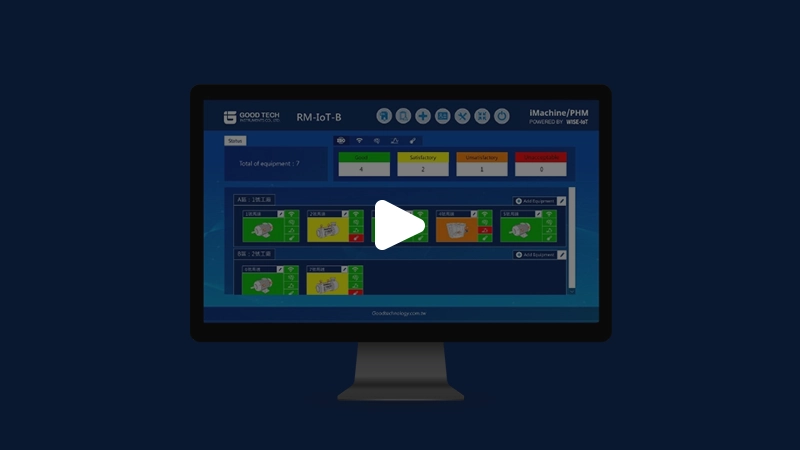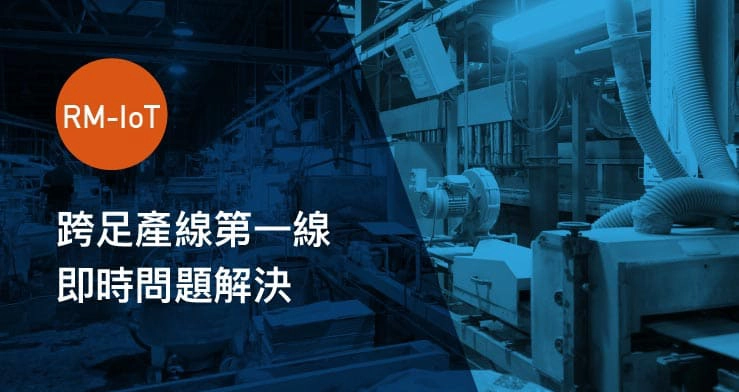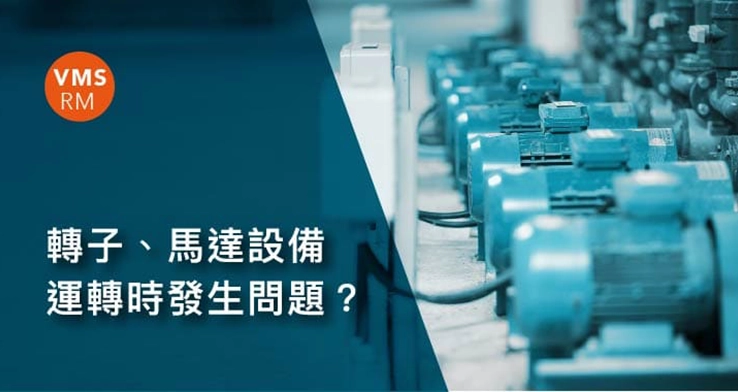Wireless LoRa Vibration Sensors Combined with AI
Why is it necessary?
Why is monitoring motor and pump equipment so important?

"Machines are the mother of industry, and motors are the mother of machines."
To meet the demands of Industry 4.0, factories are filled with large amounts of automation equipment, and motors are the core of various power machinery. They are widely used in pumps, blowers, compressors, air compressors, machine tools, and other related equipment. When a motor fails or is damaged, it will cause the equipment or machinery to stop working. By monitoring the health of the motor rotor, we can identify 60-70% of the critical points of equipment problems. To ensure the normal operation of production equipment, it is crucial to schedule motor equipment inspections immediately, monitor failure signs, prevent unplanned downtime, and find reliable evidence to execute predictive maintenance plans early.
Problem Solving
Easily Solve Factory Pain Points!
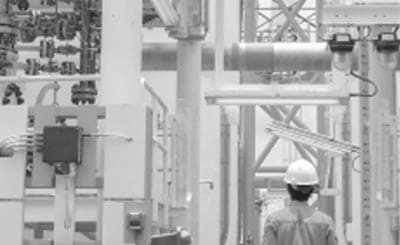
Troublesome Equipment Location
Equipment is located in high areas, widely dispersed, with a large number of units and difficult wiring.
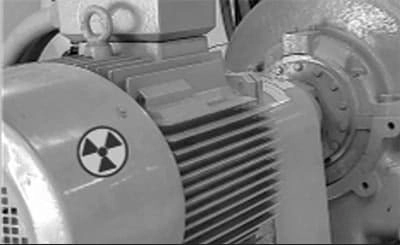
Safety Hazard Issues
Inspection locations for equipment are hazardous and require better alternatives to ensure worker safety.
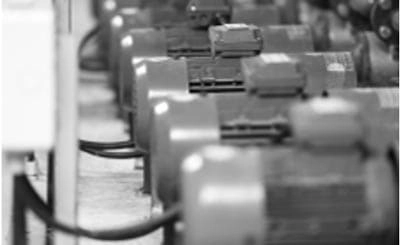
Inventory Wastage
Equipment is repaired only after failure or over-maintained, leading to delayed material preparation or excess inventory.

Work Hour Budget Limitations
Combining the above issues, there is a need to significantly reduce inspection time, labor, and wiring budget.
Feature Description
Unobstructed Monitoring, Achieving Maximum Coverage

In the past, human-powered inspections often struggled with monitoring hard-to-reach or hazardous equipment locations (such as high temperatures or high altitudes).
The RM-IOT-B Wireless Rotor Health Monitoring System Battery-powered with LoRa LPWAN wireless receiver allows data transmission over distances of 500-800 meters (depending on obstacles at the site), with one wireless receiver supporting up to 500 wireless sensors.
Feature Description
Easy System Point Expansion

RM-IOT-B Wireless Rotor Health Monitoring System Battery-powered features a Plug & Play design, simplifying complex steps. The LoRa wireless vibration sensors provide instant measurement upon installation, with built-in device sensor location diagrams and ISO standards to assist users with no vibration expertise to quickly get started.
Users can also categorize and manage different areas and equipment based on their importance. Optional real-time monitoring features, which can be integrated with smartphones or tablets, allow unlimited login numbers and locations, providing 24/7 asset performance monitoring and status analysis to take corrective actions at the right time.
Feature Description
Low Deployment Cost, Suitable for All Expansion Stages

Considering factors such as budget and efficiency acceptance, companies often set short-term and long-term goals as phased implementation directions.
The RM-IOT-B Wireless Rotor Health Monitoring System Battery-powered offers a flexible design that allows for incremental point expansion. Its wireless advantage greatly reduces wiring and piping installation costs and saves factory space.
A truly affordable and scalable solution.
Feature Description
Strong IP66 Industrial Rating

RM-IOT-B Wireless Rotor Health Monitoring System Battery-powered has LoRa wireless vibration sensors that meet the IP66 dustproof and waterproof standards, making them capable of withstanding long-term and harsh working environments. The sensors are designed to operate in temperatures from -20 to +85°C.
After long-term testing, signal transmission performance remains stable, even with temperature variations. Users can customize the transmission interval (from 10 seconds to 24 hours), and just two 3.6V AA lithium batteries provide enough power for one year of use (lasting 1-2 years with 30-minute intervals), saving time and labor.
Feature Description
AI Smart Calculation, Predicting a 7-Day Decline Period

RM-IOT-B Wireless Rotor Health Monitoring System Battery-powered includes an AI smart algorithm that cross-compares 7 days of data based on VRMS vibration signals and other feature data.
It detects motor deterioration levels and provides a judgment on the equipment's deterioration (Normal / Mild / Moderate / Severe). Additionally, it can predict the motor's failure trend, calculating the future 7 days' Vrms and Degrading Level with AI analysis. Alerts are triggered when abnormal feature values occur.
Cost Reduction
Phased Expansion
RM-IOT-B Wireless Rotor Health Monitoring System (Battery-Powered) allows for flexible expansion, enabling incremental addition of measurement points. The advantages of LoRa wireless vibration sensors significantly reduce wiring and piping installation costs while also saving factory wiring space, minimizing both technical and wiring costs.
A truly affordable and scalable solution, suitable for growing enterprises at various stages.
UI Function Interface
Rotor Quality Standard Management

Software Feature: The Rotor Quality Standard Management System integrates ISO 10816 / 20816 / 2372 standards, applicable to various rotating machinery in industries ranging from semiconductors to manufacturing (motors, compressors, pumps, etc.).
Users do not need to memorize complex reference tables; they can simply apply the appropriate standard based on the motor's output range. The software categorizes equipment status using color-coded indicators: Excellent, Normal, Warning, and Danger, allowing users to easily monitor the status of all equipment across the facility.
UI Function Interface
AI Predicted Degradation Trends

Software Feature: AI Predicted Degradation Trends
By accumulating characteristic data such as VRMS vibration signals, AI algorithms perform cross-comparisons to conduct early diagnostics.
The AI predicts equipment aging and degradation over a 7-day period, categorizing it into four levels: Normal, Mild, Moderate, and Severe. This eliminates the need for manual spectrum analysis, streamlining decision-making.
Users can plan maintenance schedules in advance, prepare necessary spare parts, and minimize unexpected downtime.
UI Function Interface
Custom Monitoring & Alarm Thresholds

Software Feature: Custom Monitoring & Alarm Thresholds
The system utilizes a three-axis MEMS vibration accelerometer sensor, collecting up to 25 different monitoring parameters, including temperature, acceleration, velocity, and displacement.
If ISO standards do not meet specific needs, users can define custom threshold management settings or adjust parameters based on manufacturer recommendations.
When the monitored data exceeds the predefined threshold, it will be highlighted in red as an alert, enabling prompt issue detection.
UI Function Interface
Optional Feature: Mobile Device Compatibility
Applicable Targets
Suitable for Various Rotor Equipment

Application Fields:
Semiconductor industry, petrochemical plants, food factories, pharmaceutical plants, paper mills, panel factories, LED factories, power plants, pumping stations, wastewater treatment plants, manufacturing, equipment manufacturers, maintenance service providers, etc.
Target Equipment:
Pumping & suction/water transport equipment: Vacuum pumps, oil pumps, wastewater pumps, etc.
Production machinery: CNC machine spindles, cutting machines, etc.
Compressors: Screw-type, centrifugal, reciprocating compressors, etc.
Others: Cooling towers, exhaust fans, air conditioning units, etc.
Architecture Overview
Rotor Equipment & System Structure


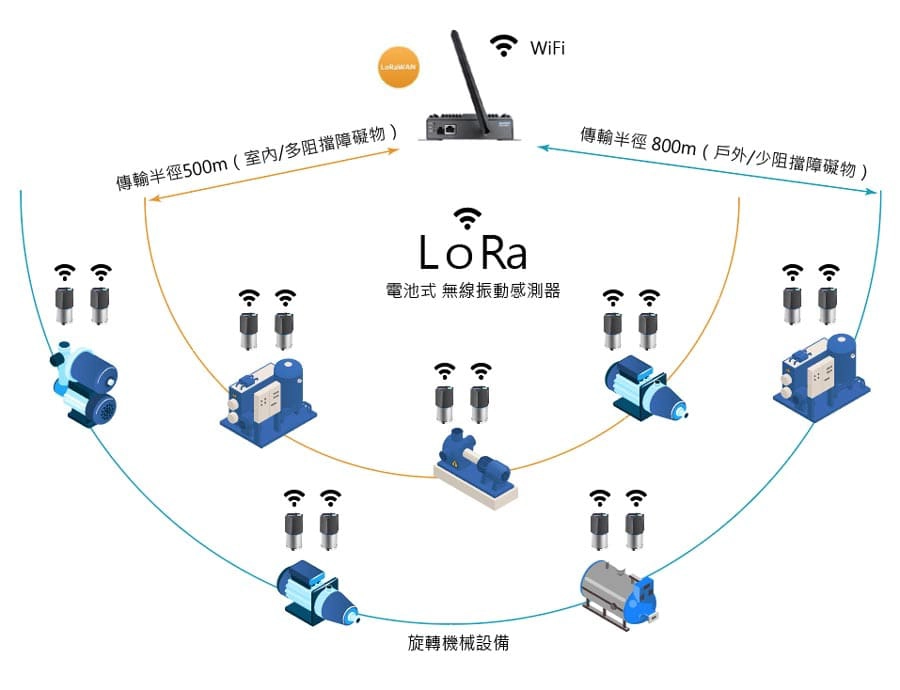
Support
Other Rotor Equipment Related
